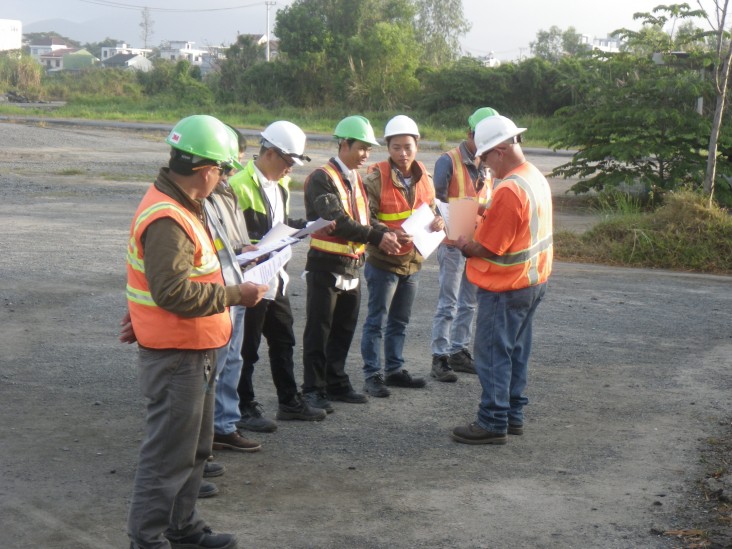
November 2016—Walk by the average Vietnamese construction site and you will probably see some heads without hard hats, people without vests, bare feet or sandals and minimal harnesses or fall protection. As in many developing countries, lower costs are still often prioritized over worker safety on the average local building project.
Despite the learning curve, Vietnamese workers and managers at USAID’s environmental dioxin remediation site at Danang International Airport have successfully adapted to the site’s stringent health and safety regulations, equal to the standards of the U.S. Occupational Safety and Health Administration.
“We had to work to build a safety culture here where there was none before,” says Karl Tilgner, the site’s health and safety manager. Workers attend two days of compulsory hazardous waste and construction safety training and annual eight-hour refresher courses. This is a far cry from the one-time 15-30-minute safety briefings common at other local building projects. And at least one health and safety officer is present per five to six workers at all times.
Three years into the project, about 500 workers have completed over 800,000 safe work hours. Tilgner now considers the Danang site “comparable to working on a U.S. construction site.” He adds that “Our intent is also to instill in workers a different way to look at health and safety that they can apply throughout their career.”
Involvement at the USAID remediation site has provided a new knowledge base for many, from the laborers themselves to health and safety officers, to managers at Vinausen, a Vietnamese subcontractor on the project. After receiving training from their American partners, Vinausen now has four Vietnamese staff conducting health and safety trainings themselves. This has been especially important because the staff have the cultural context and language skills to best convey the information to their fellow Vietnamese.
Bùi Thị Hiên, the Vinausen project manager, says she feels proud because “Health and safety is the best knowledge employees will take with them, both in their work life and personal life.”
“I am happy with how the management cares about the workers here,” says Mai Thế Anh, one of the site’s health and safety officers. He confirms that he gained “a lot more knowledge” on this project and will “definitely” use it on future jobs. He feels confident that, in his professional capacity, he will be able to argue for higher safety standards with his future supervisors.
Trẩn Bá Học, a worker on the site, agrees that he too will carry his new experience forward and share it with friends in construction. He also asserts that it will affect his choice of future work. As he put it, “You can always find another job, but you can’t find a second life.”
LINKS
Follow @USAIDVietnam, on Facebook, on Flickr, on YouTube







Comment
Make a general inquiry or suggest an improvement.